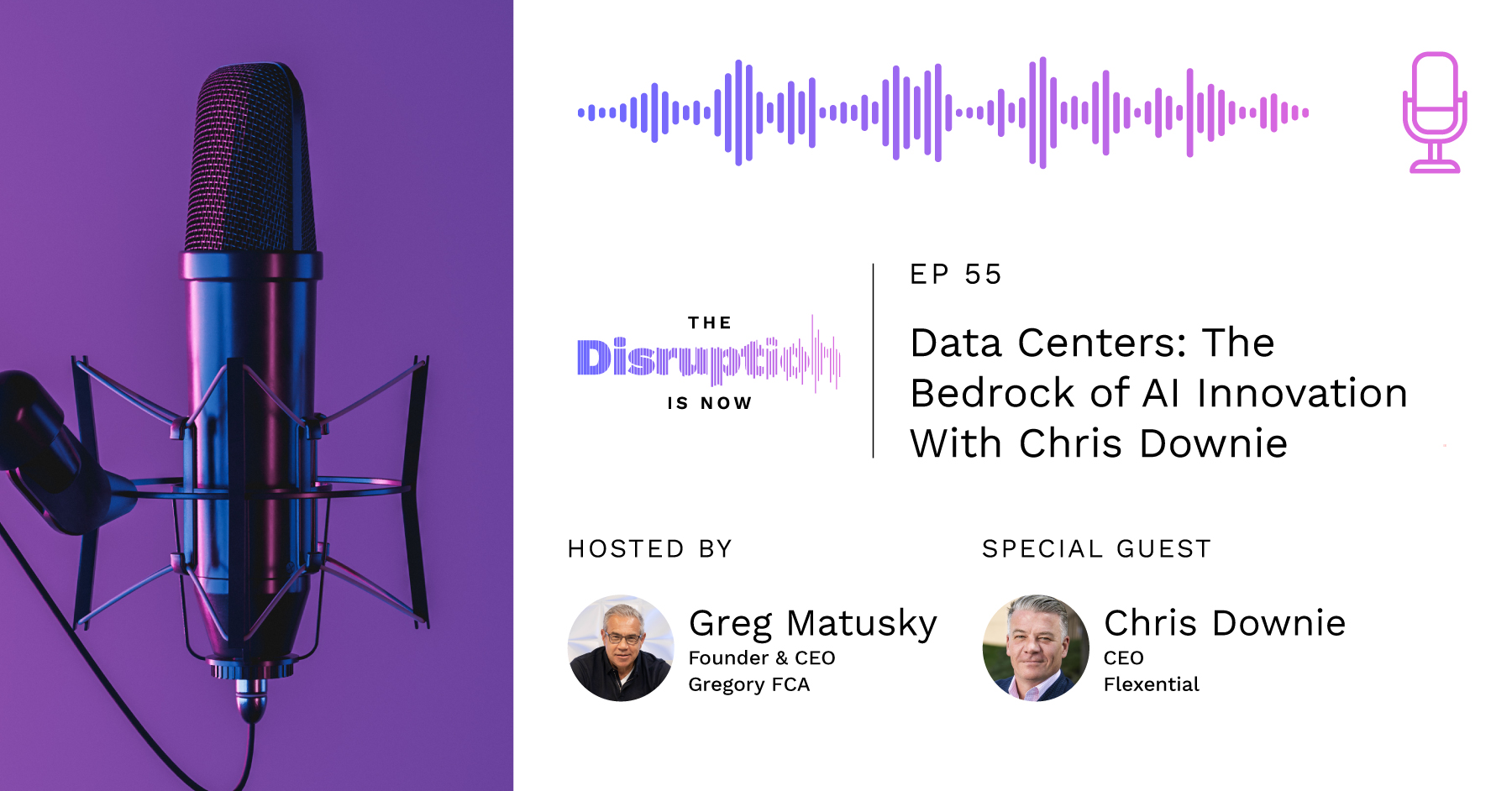AI’s rapid expansion is forcing a massive rethink of digital infrastructure. The explosion in demand for compute power is driving new data center development, reshaping energy markets, and sparking creative ideas like putting servers on the moon.
On The Disruption Is Now, host Greg Matusky sits down with Chris Downie, CEO of Flexential, to discuss how AI is transforming the role of data centers. Their conversation covers everything from surging energy needs to data storage projects straight out of sci-fi.
Here’s how AI is transforming more than just organizations and workforces.
Watch now:
Key takeaways
AI’s growth is outpacing data center supply
For years, the demand for data centers followed a predictable growth curve. That changed two years ago.
Downie describes how AI’s explosion has created an unprecedented supply-and-demand imbalance. Data centers used to scale gradually. Now, they need to grow 10 times faster. This demand surge is shifting how companies plan, build, and manage data infrastructure.
Demand for AI is so high right now that Flexential is pre-selling data center capacity well in advance of delivery.
Energy is the next AI battleground
AI’s energy consumption is forcing the tech industry to rethink power generation.
Downie explains that while data centers have always focused on energy efficiency, AI is pushing demand beyond what utilities can easily supply. As a result, the industry is looking to new solutions, including nuclear power.
Reviving a reactor at Three Mile Island and small-scale nuclear and fusion energy are some of the potential options to satisfy demand.
Data centers are moving beyond Earth
The idea of a lunar data center sounds like science fiction. But Flexential is working with Lonestar to launch a compute infrastructure on the moon. Secure, off-planet data storage can address sovereignty concerns and enable next-generation applications.
Governments and enterprises are among the first interested clients. Countries that hesitate to store data in another nation’s jurisdiction see the moon as a neutral ground. If the project succeeds, it could redefine how businesses think about data sovereignty and resilience.
Universities are becoming unexpected AI power users
Data centers aren’t just for hyperscalers like Google and Microsoft. Universities are emerging as major AI infrastructure customers.
Research institutions are ramping up AI-powered studies in medicine, physics, and social sciences. That means they need access to massive compute resources. Many universities are now outsourcing their AI workloads to professional data centers instead of managing infrastructure in-house.
AI is driving a shift from massive models to local processing
The debate over large AI models versus smaller, localized models is intensifying.
Downie discusses how advancements like DeepSeek suggest that smaller, more efficient AI models could challenge the dominance of OpenAI, Google, and Meta. These smaller models could run on more localized infrastructure, reducing the need for massive, centralized data processing.
If that happens, it could change how companies deploy AI, moving from huge data centers to more distributed computing environments.
Key Moments in the Conversation
- State of demand for compute power (1:01)
- Why proximity to population centers is critical for AI data centers (2:51)
- The massive energy needs of AI (6:00)
- Putting a data center on the moon (8:27)
- Supporting AI research at universities (13:06)
- Massive AI models vs localized AI processing (14:18)
- What has surprised Chris the most about AI’s impact (17:25)

